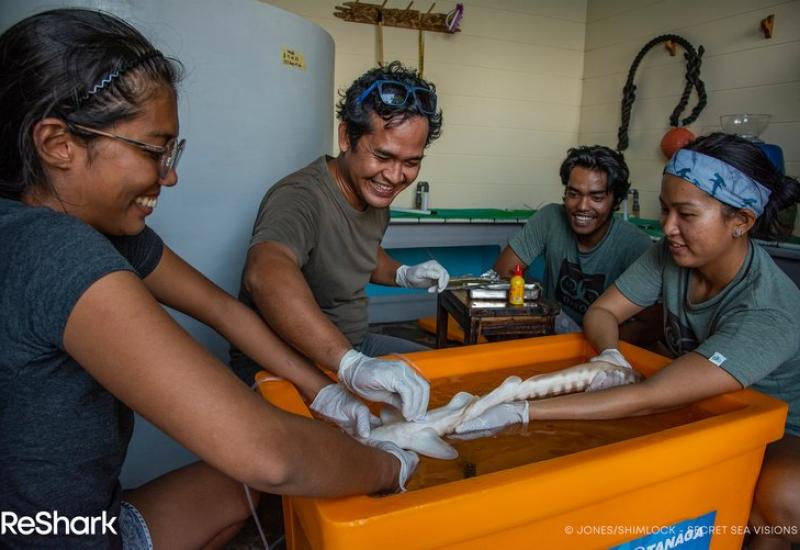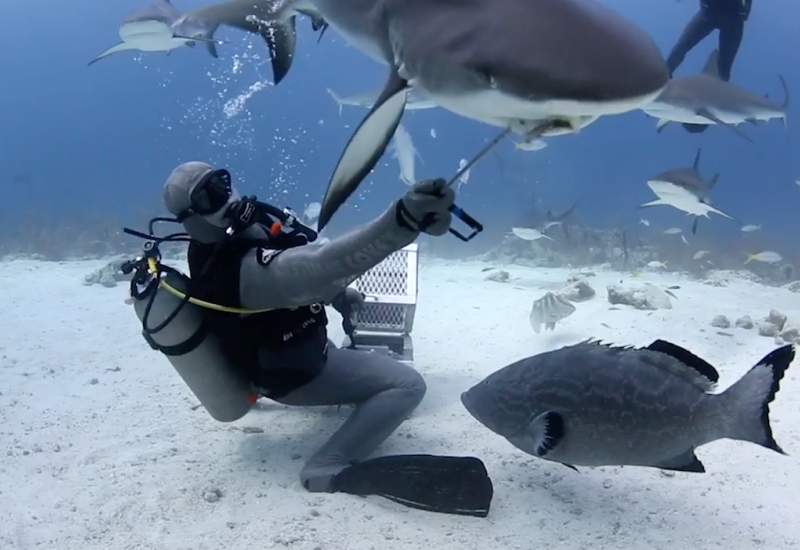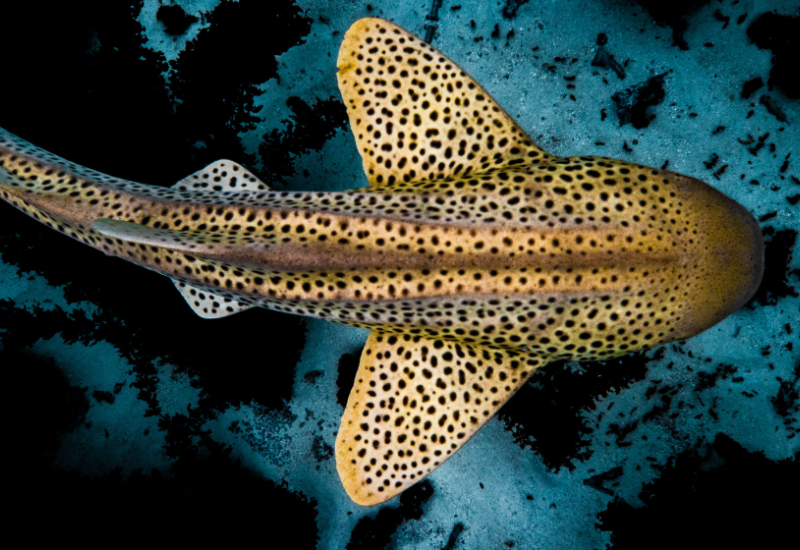Looking for Lost Sharks
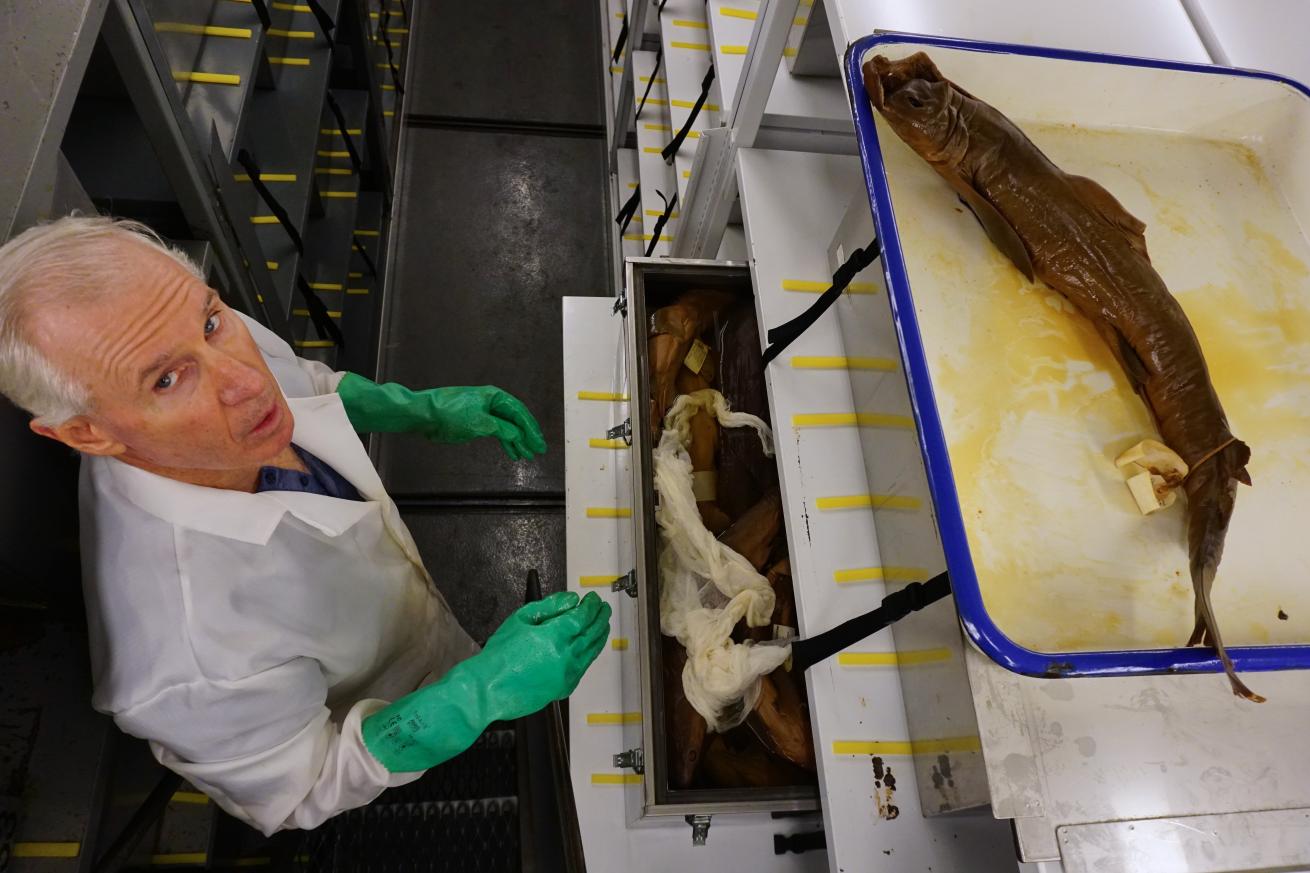
Denisse SotomayorDave Ebert with a sharpfin houndshark at the California Academy of Sciences in San Francisco
California scientist David A. Ebert is an expert in searching for “lost sharks”–species that are considered extinct. Ebert is currently exploring the coasts of Ecuador and northern Peru in search of clues about the sharpfin houndshark (Triakis acutipinna), a species that has not been recorded for over 60 years and could be considered extinct. Last seen in 1961 in Isla de la Plata, Ecuador, the sharpfin houndshark’s habitat included the southern part of Colombia, Ecuador and northern Peru. In August 2023, Ebert conducted an information-gathering expedition in the hopes of finding this elusive creature.
After more than 40 years of studying “lost sharks” and traveling the world in search of them, Ebert has rightfully earned the nickname “Lost Shark Guy” within the scientific field. He has discovered 53 new shark species, including: the peculiar-looking Galapagos ghost shark (Hydrolagus mccoskeri), the tiny whitespot ghost shark (Hydrolagus alphus) and Lana's sawshark, (Pristiophorus lanae), which was named in honor of Ebert’s niece. He has also written 700 research papers and 35 books, including co-authoring "Sharks of the World," the renowned guide to every known shark.
Related Reading: How Scuba Divers Are Helping to Save the Critically Endangered Angel Shark
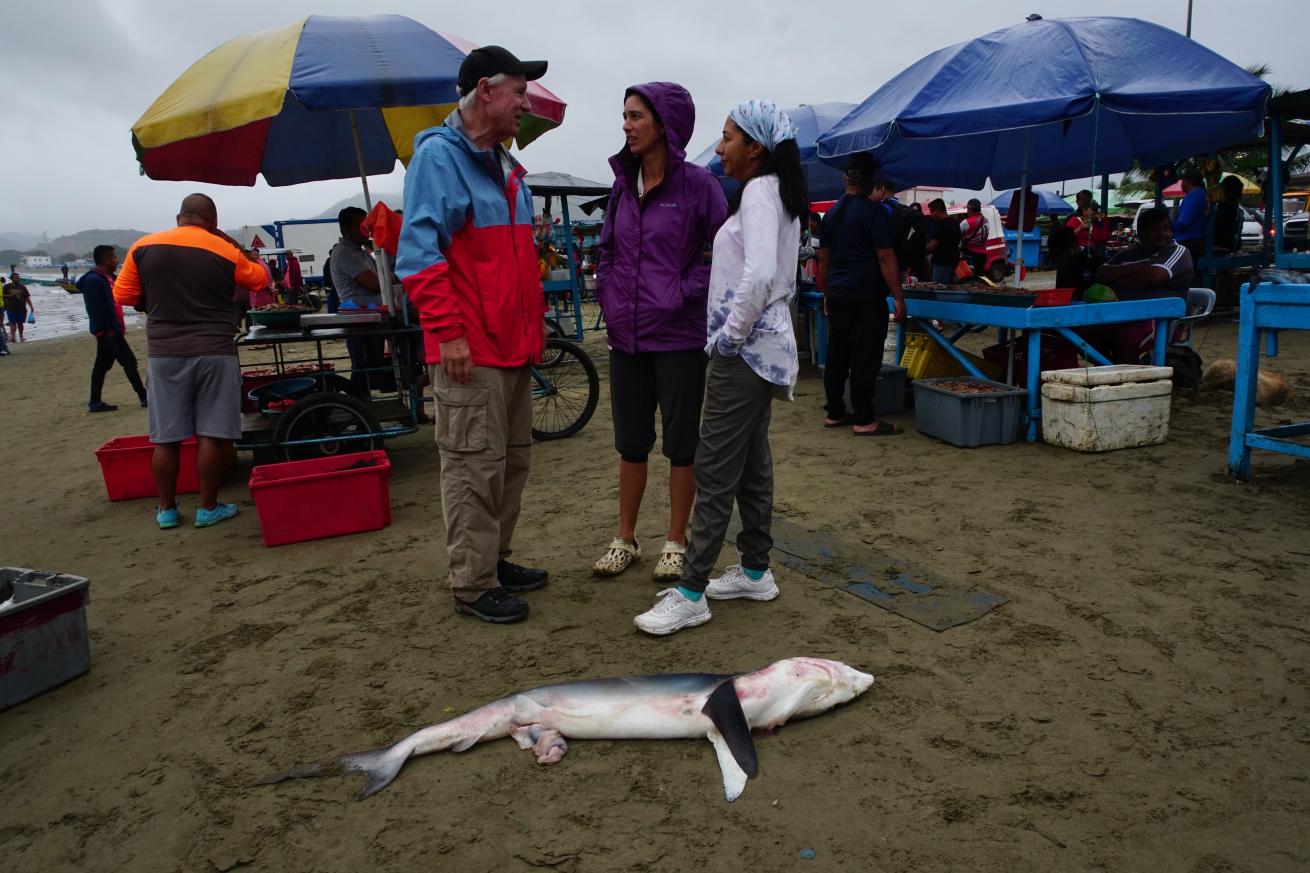
Denisse SotomayorThe research team Dave Ebert, Adriana Gonzalez and Adriana Cevallos at a landing port at Puerto Lopez, Ecuador
How to Find an Extinct Species
Because the ocean is vast, searching for any rare species by scuba diving would be fruitless. Ebert’s strategy is far more strategic: he visits ports and local markets, where he analyzes shark landings for a better chance of finding species from different depths. Equipped with testimonies collected from local fishermen and working in collaboration with local scientists, Ebert pinpoints the best spots from which he begins his search.
The Expedition
The journey began in San Francisco at the California Academy of Science, which houses one of the largest ichthyology collections in the world. In this vast basement collection, the last specimen of the sharpfin houndshark collected on Isla de la Plata in 1961 is preserved. There is only one other known specimen of this species in the world, currently held at the Smithsonian National Museum of Natural History in Washington D.C. Both pieces are the only historical evidence of what the sharpin houndshark looked like.
Photos, measurements and characteristics were taken of this shark specimen to create a visual aid in the expedition to find it. Ebert began his search in Puerto Lopez, Ecuador, where he teamed up with local biologist and port inspector Adriana Cevallos to tour the landing area. Older fishermen recognized the species from the photos, affirmed that they had once caught it and even provided some clues about where it was once captured.
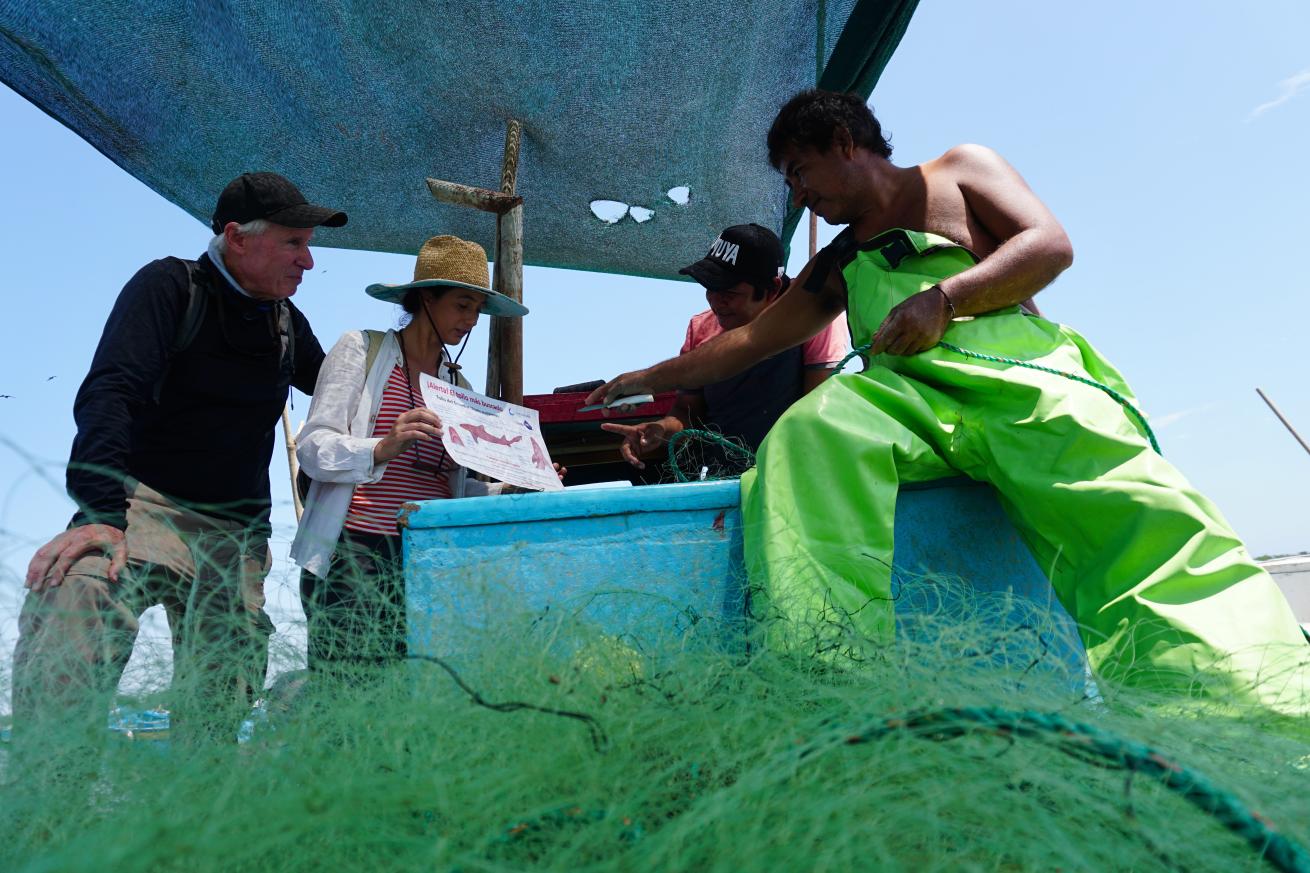
Denisse SotomayorDave Ebert, Adriana Gonzales Pestana collaborate with local Peruvian fishermen in Puerto Pizarro, Tumbes, Peru
Off the coast of Puerto Lopez is Isla de la Plata, where the sharpfin houndshark was last seen over 60 years ago. There, Ebert scuba-dived to explore the habitat of this shark, which lived among corals, turtles, humpback whales and oceanic manta rays. Currently, Isla de la Plata is a protected area and part of Machanilla National Park. It is a highly sought-after diving destination, known as the "little Galapagos."
The expedition continued in Puerto Cayo, Manta and Las Pinas. In these ports, the oldest fishermen recognized the species. Most of the fishermen's accounts confirmed that the sharpfin houndshark was a rare species, about 3 feet/1 meter long, and used to be caught in shallow rocky reefs. And yet, no one had seen it for more than 30 or 40 years.
Ebert’s last search point in Ecuador was the Santa Rosa market in Salinas, but unfortunately no clues were found about the Triakis acutipinna, though numerous blue sharks, a crocodile shark, a baby leopard shark and a tiger shark measuring over 10 feet/3 meters long were spotted.
Related Reading: Cabo’s Other Wild Side: Swimming with Blue and Mako Sharks

Denisse SotomayorDave Ebert and Adriana Gonzales talking with a fisherman in northern Peru
Why Should We Look for Lost Sharks?
"The importance of searching for lost sharks is that these species can disappear without anyone ever noticing, and we cannot conserve something that humanity does not know or has forgotten. These uncommon species are an important indicator to measure the health of the ocean," explains Ebert.
The expedition continued into Peru, beginning in Puerto Pizarro and extending to Cancas, in the state of Tumbes. Ebert relied on the expertise of Adriana Gonzalez, a marine biologist who has been studying sharks in Peru for over 10 years. Unfortunately for Ebert’s search, very few fishermen in Peru recognized the species.
In this first expedition through Ecuador and Peru, Ebert did not find the sharpfin houndshark, but key information about the species was shared in ports and markets with local fishermen, including the importance of finding it. Ebert posted the contact numbers of local marine biologists on posters he left at each port, so that fishermen might help in his search, even after he returns home.
Ebert is hopeful that one day, soon, he will receive a phone call announcing that a sharpfin houndshark has been spotted–confirming his suspicion that it is not extinct. While this expedition may have ended for Ebert, it is just the beginning of a new leg of the journey that he started over 40 years ago.

